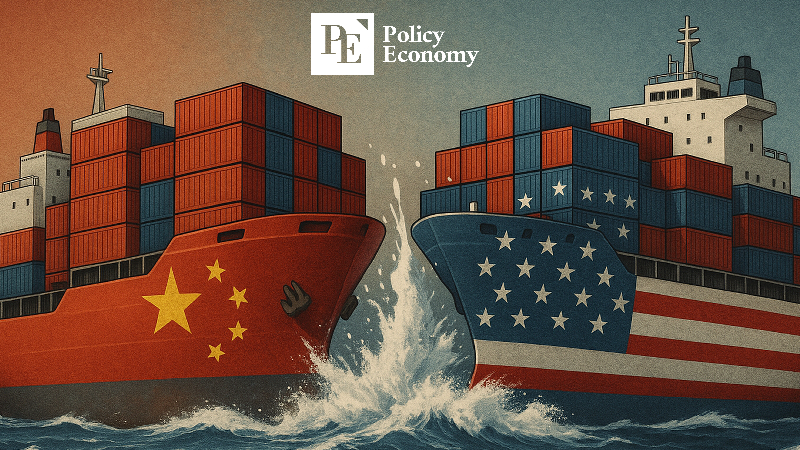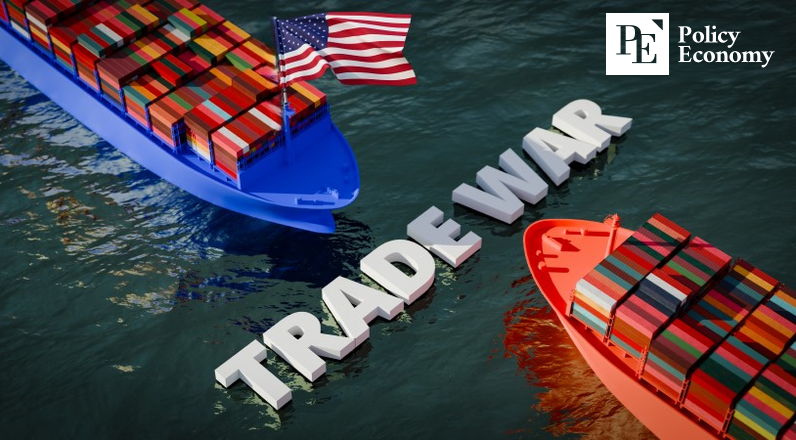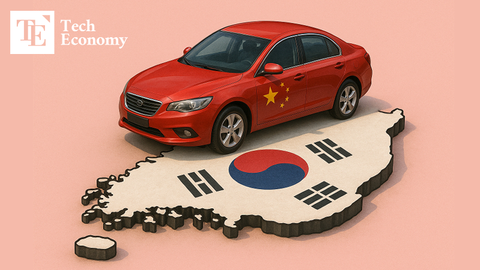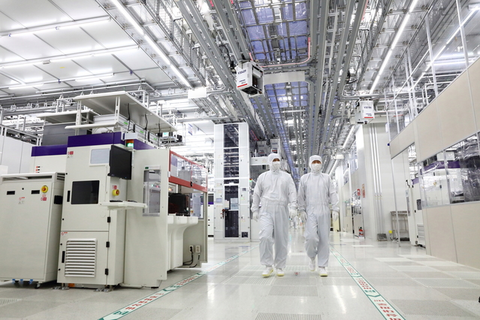China Significantly Cuts U.S. Agricultural Imports, Bringing 'Windfall Gains' to South American Farmers
Input
Modified
China’s Imports of U.S. Agricultural Products Plunge 43% Last Month “Nightmare of the First Trade War Returns” — U.S. Farmers in Distress Brazil, Argentina Step In to Fill America’s Void

The U.S.-China trade war is not just a clash of economic titans; it’s a battle with profound ripple effects that extend far beyond tariff rates and trade deficits. Nowhere is this impact more visible than in the global agricultural sector, where farmers are often the first casualties of geopolitical strife. As the tariff war between Washington and Beijing continues to escalate, it has paralyzed the flow of agricultural goods between the two countries. Once one of the most lucrative markets for American farmers, China is now rapidly pivoting toward alternative suppliers—chiefly in South America.
This seismic shift in trade dynamics is leaving U.S. farmers grappling with mounting losses while providing an unprecedented boon to agricultural exporters in Brazil, Argentina, and other nations. What began years ago as a temporary trade dispute is now evolving into a structural realignment of global agricultural supply chains—one that may outlast the politics that sparked it.
A Steep Decline in U.S. Agricultural Exports
The latest data underscores just how swiftly the trade relationship between the U.S. and China has deteriorated. According to a report from the South China Morning Post (SCMP), citing figures from China’s General Administration of Customs, China’s imports of U.S. agricultural products in May dropped by over 43% year-on-year, measured in value. This dramatic plunge reflects the heavy toll exacted by the tariff war, which has disrupted longstanding trade patterns almost overnight.
The numbers are staggering. Imports of boneless fresh U.S. beef and grain sorghum, once staples of U.S. agricultural exports to China, have plummeted by more than 97% compared to the same month last year. Imports of corn and uncombed cotton yarn also saw catastrophic declines, falling by 93% and 94%, respectively. Meanwhile, frozen beef imports from the U.S. were halved, and shipments of frozen and preserved chicken products contracted by more than 60%.
These declines are a direct consequence of the retaliatory tariff measures exchanged by the two governments. In March, China levied 10–15% tariffs on a wide range of U.S. agricultural goods in retaliation for the U.S. imposing a blanket 10% tariff on all Chinese products. But this was only the beginning. By April, the tariff escalation had spiraled, with both sides raising duties to well over 100% on various categories of goods, effectively making U.S. products prohibitively expensive for Chinese buyers. It was not until mid-May that the two sides paused hostilities to negotiate a temporary “truce” focused on tariff adjustments, but by then, the damage was deeply entrenched.
The sudden halt in shipments isn't limited to one or two commodities but cuts across a broad spectrum of U.S. agricultural exports, threatening the livelihoods of countless American farmers who had long relied on the Chinese market as their most significant overseas customer.

The 'Soybean War' and the Heavy Toll on U.S. Farmers
For many American farmers, particularly soybean producers, this is not their first experience navigating the treacherous waters of U.S.-China trade tensions. The seeds of the current crisis were planted during the first U.S.-China trade war in 2018, when then-President Donald Trump imposed 25% tariffs on USD 34 billion worth of Chinese imports, initiating what would become a prolonged economic standoff.
China responded swiftly with reciprocal tariffs targeting key U.S. exports, including agricultural products and automobiles. The escalation continued into September 2018, when the U.S. further imposed a 10% tariff on an additional USD 200 billion worth of Chinese goods. Despite a brief truce negotiated during the December 2018 G20 Summit in Argentina, talks collapsed in May 2019, leading the U.S. to raise tariffs on USD 200 billion in goods from 10% to 25%. China countered with tariffs on USD 60 billion of U.S. products.
A resolution only arrived in January 2020, when the two nations signed the Phase One Trade Agreement. Under the terms, China pledged to purchase an additional USD 200 billion worth of U.S. goods and services by the end of 2021, and the U.S. agreed to roll back certain tariffs. But the scars of the prolonged conflict remained, particularly for American farmers.
The hardest-hit sector was soybeans. China is the world’s largest consumer of soybeans, importing approximately 80% of its total soybean demand. Historically, the U.S. supplied about 57% of China's soybean imports over the past 18 years, making the Chinese market indispensable to American growers.
When China slapped high tariffs on U.S. soybeans, the fallout was catastrophic. The so-called “Soybean War” resulted in a staggering 79% drop in U.S. soybean exports to China during the height of the trade war. The financial cost was brutal: American farmers endured an estimated USD 12 billion in losses over just two years. The loss of access to the Chinese market devastated farming communities, triggering bankruptcies, foreclosures, and widespread uncertainty across America’s agricultural heartland.
South America Steps in as the New Agricultural Powerhouse
While U.S. farmers struggled, their counterparts in South America found themselves in an enviable position. The trade war created a golden opportunity for nations like Brazil and Argentina to step in and fill the void left by U.S. suppliers. During the first trade war, China began diversifying its agricultural supply chains to reduce dependence on the United States, a strategy that is now paying enormous dividends.
Brazil has emerged as the most prominent beneficiary. Since the onset of the U.S.-China trade conflict, Brazil has solidified its role as China’s primary agricultural supplier, enjoying exponential growth in exports. Between 2016 and 2023, the U.S. share of China’s agricultural imports plunged from 20.7% to 13.5%, while Brazil’s share rose sharply from 17.2% to 25.2%.
The soybean trade illustrates the magnitude of this shift. In 2023, Brazil shipped an astonishing 72.52 million tons of soybeans to China, a 280% increase compared to 2010. This accounts for a staggering 73% of Brazil’s total soybean exports, highlighting how integral Chinese demand has become to the Brazilian agricultural economy. The relationship is so strong that Brazilian farmers have tailored their production cycles to meet China’s growing appetite.
Argentina, another agricultural heavyweight, is also cashing in. A leading producer of both soybeans and corn, Argentina has secured major deals with China. According to Bloomberg, Chinese buyers recently signed letters of intent worth approximately USD 900 million to purchase soybeans, corn, and vegetable oils from Argentine exporters. China is now not only the largest importer of Argentine soybeans but is also ramping up purchases of soybean oil, further strengthening ties.
What’s clear is that the current U.S.-China trade conflict isn’t merely a temporary disruption. It is fostering a lasting realignment in global agricultural trade. With China having already built strong supply chains across South America, the prospect of U.S. farmers reclaiming their former dominance in the Chinese market grows dimmer by the day.
The winners and losers of this trade war are becoming increasingly evident. While American farmers continue to grapple with market losses, debt, and uncertainty, their South American counterparts are riding a wave of prosperity, driven by a Chinese demand that shows no signs of slowing.





















